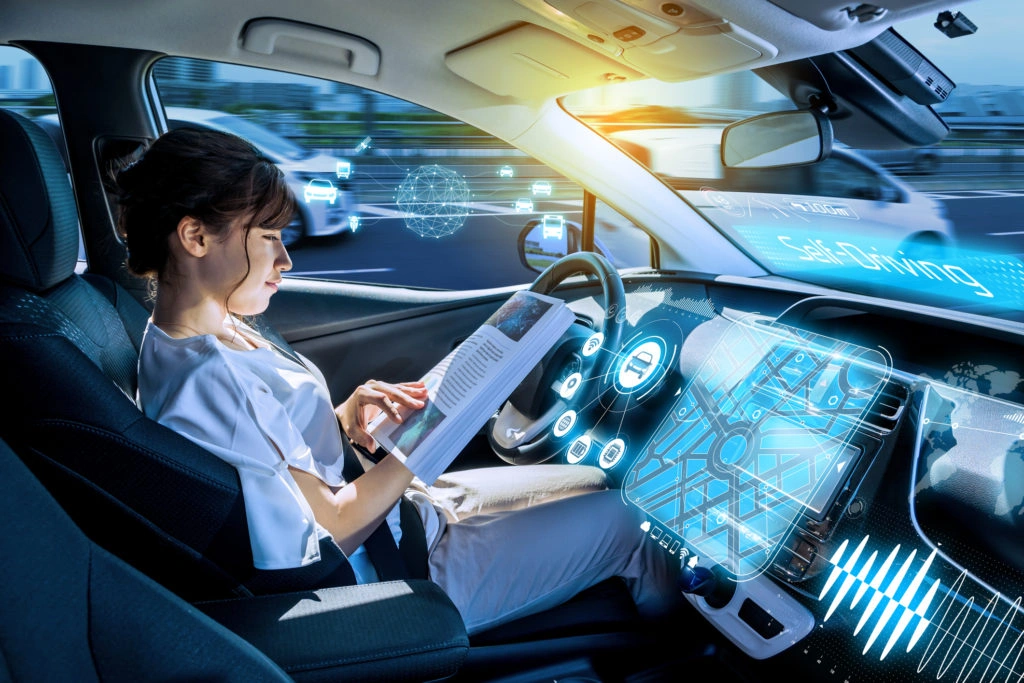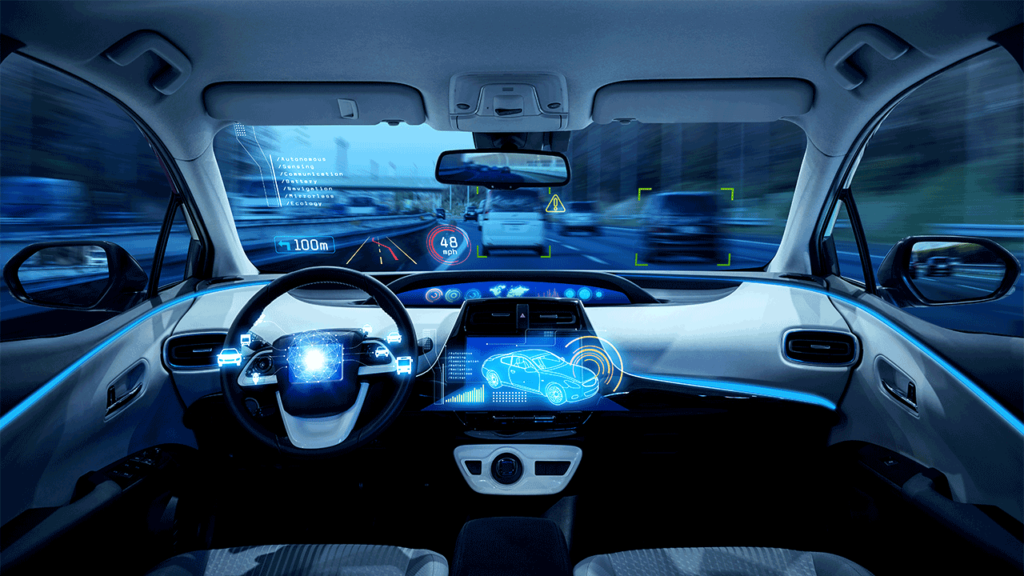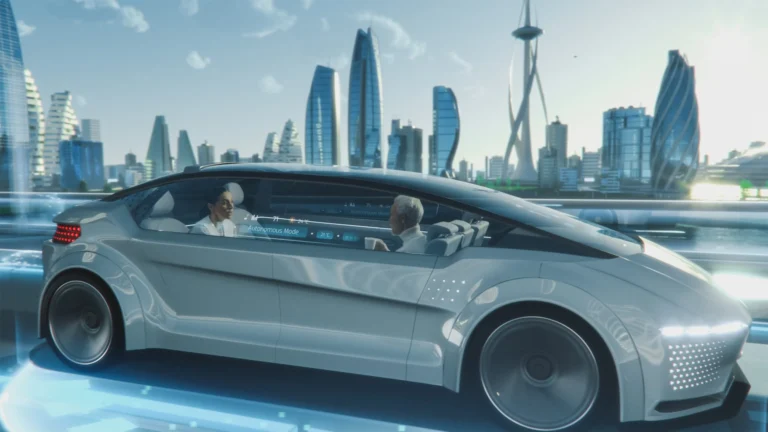The automotive industry is undergoing a massive transformation, and at the heart of this revolution is autonomous vehicles (AVs). Self-driving technology is no longer a futuristic dream—it is rapidly becoming a reality. With advancements in artificial intelligence (AI), machine learning, and sensor technology, autonomous vehicles are set to reshape transportation as we know it. But what does the future hold for self-driving cars? Let’s explore the potential, challenges, and impact of this technological revolution.
The Evolution of Autonomous Vehicles
The journey toward fully autonomous vehicles has been a long and complex one. From early experiments in robotic cars to today’s AI-driven vehicles, the progress has been extraordinary. Companies like Tesla, Waymo, and General Motors are leading the charge, developing self-driving technology that promises safer, more efficient, and sustainable mobility solutions.
Levels of Vehicle Autonomy
Autonomous vehicles are classified into five levels based on their ability to operate without human intervention:
- Level 0: No automation—human drivers are fully in control.
- Level 1: Basic driver assistance (e.g., cruise control, lane-keeping assist).
- Level 2: Partial automation, requiring human oversight (e.g., Tesla’s Autopilot).
- Level 3: Conditional automation—vehicles can handle some tasks but still require a human driver in complex situations.
- Level 4: High automation—cars can drive themselves in most conditions, but manual intervention is possible.
- Level 5: Full automation—vehicles are entirely self-driving, with no need for a steering wheel or driver input.
As of today, we are primarily at Level 2 and Level 3, with companies striving to achieve full automation in the coming years.
The Benefits of Autonomous Vehicles

1. Enhanced Road Safety
One of the most significant promises of autonomous vehicles is reducing accidents caused by human error. AI-driven cars can react faster than humans, obey traffic rules flawlessly, and eliminate risks such as drunk driving, fatigue, and distraction.
2. Reduced Traffic Congestion
Self-driving vehicles can communicate with each other and adapt to road conditions in real time. This optimized traffic flow can reduce congestion, shorten travel times, and improve overall efficiency on the roads.
3. Increased Mobility for All
Autonomous vehicles offer newfound independence for elderly individuals, disabled people, and those unable to drive. With self-driving taxis and public transport, mobility will become more inclusive and accessible.
4. Environmental Benefits
Most AVs are designed to be electric or hybrid, reducing carbon emissions and dependence on fossil fuels. Additionally, AI-driven efficiency can lead to better fuel consumption and fewer idling vehicles, further cutting emissions.
5. Cost Savings
In the long run, autonomous vehicles can lead to lower transportation costs. Ride-sharing services powered by AVs can reduce the need for personal car ownership, lowering expenses related to fuel, insurance, and maintenance.
Challenges Facing Autonomous Vehicles

1. Technological and Regulatory Hurdles
Despite the progress, self-driving technology is still evolving. Ensuring reliability in all weather conditions, complex urban environments, and unpredictable human behavior remains a challenge. Additionally, governments worldwide are working on regulatory frameworks to ensure AV safety and liability laws.
2. Cybersecurity Risks
With increasing connectivity, autonomous vehicles are vulnerable to hacking. Cybersecurity measures must be robust to prevent potential risks like unauthorized control or data breaches.
3. Job Displacement
The rise of autonomous vehicles could impact jobs in industries such as trucking, taxi services, and delivery. While new job opportunities may arise in AI, maintenance, and fleet management, addressing workforce displacement is a key concern.
4. Public Trust and Acceptance
Many people are still hesitant about self-driving technology. Building consumer trust through real-world testing, safety demonstrations, and regulatory approvals will be crucial in increasing adoption rates.
The Future of Smart Mobility
The future of autonomous vehicles is not just about individual self-driving cars but a complete transformation in urban mobility. Some key developments to watch include:
1. Self-Driving Taxis and Ridesharing
Companies like Waymo, Uber, and Cruise are already testing autonomous ride-hailing services. This shift could significantly reduce transportation costs and emissions while improving convenience.
2. Smart Cities and Connected Infrastructure
As AVs become more widespread, cities will integrate smart infrastructure like intelligent traffic signals, connected roads, and vehicle-to-everything (V2X) communication. This will further enhance efficiency and safety.
3. Autonomous Freight and Delivery Services
Self-driving trucks and delivery bots are expected to revolutionize logistics. Major players like Amazon and FedEx are investing in AV-powered delivery solutions to optimize supply chains and reduce costs.
4. Car Ownership Shift
With the rise of shared mobility, the traditional concept of car ownership may decline. Instead of owning cars, people may rely on subscription-based or on-demand autonomous transport services.
Final Thoughts
The autonomous vehicle revolution is well underway, and its impact will extend far beyond just self-driving cars. From enhanced safety and reduced congestion to environmental benefits and increased accessibility, the potential is vast. However, challenges such as regulatory hurdles, cybersecurity risks, and public acceptance must be addressed for widespread adoption.
As technology continues to advance, autonomous vehicles will play a pivotal role in shaping the future of transportation. Whether it’s through self-driving taxis, smart city integration, or AI-powered logistics, one thing is clear: the road ahead for autonomous vehicles is filled with possibilities. Are you ready for the future of smart mobility?


